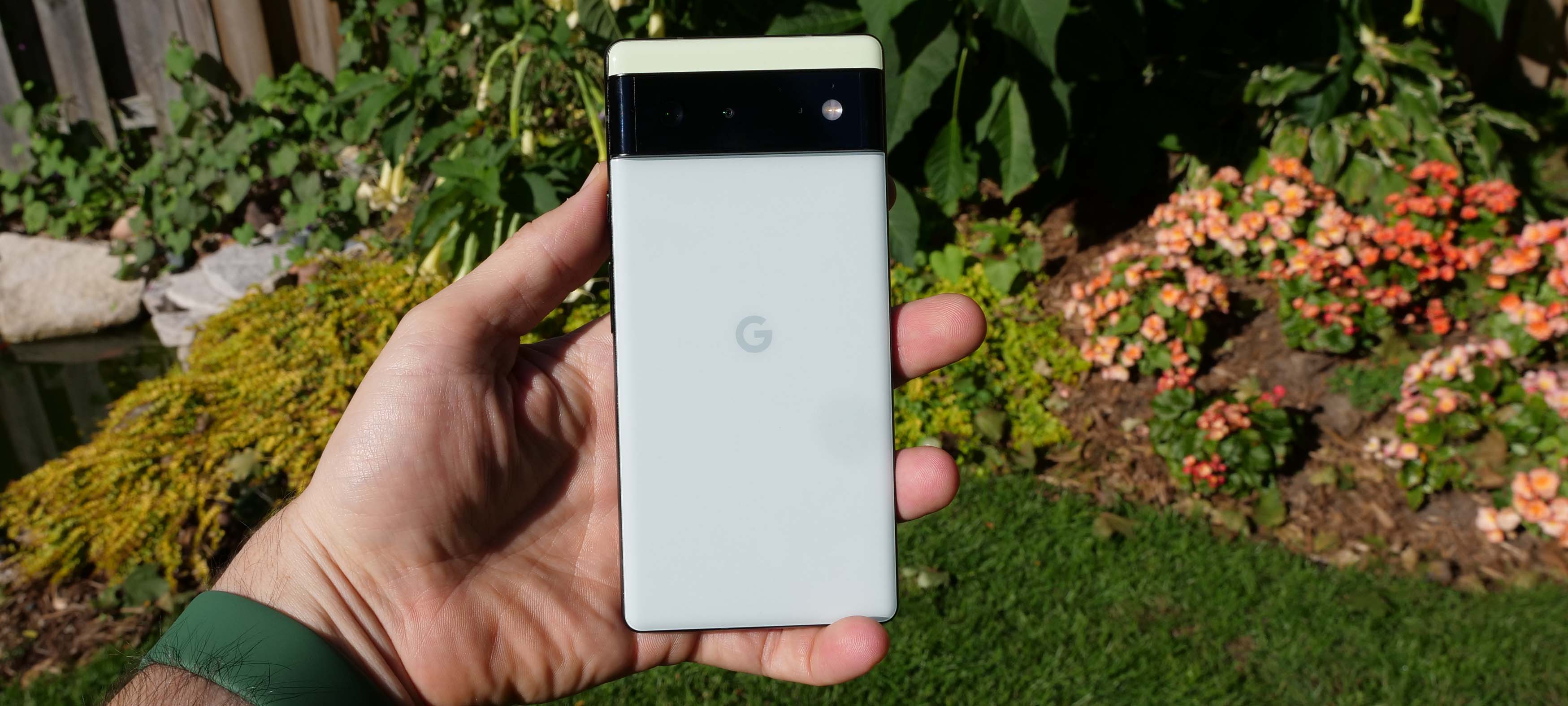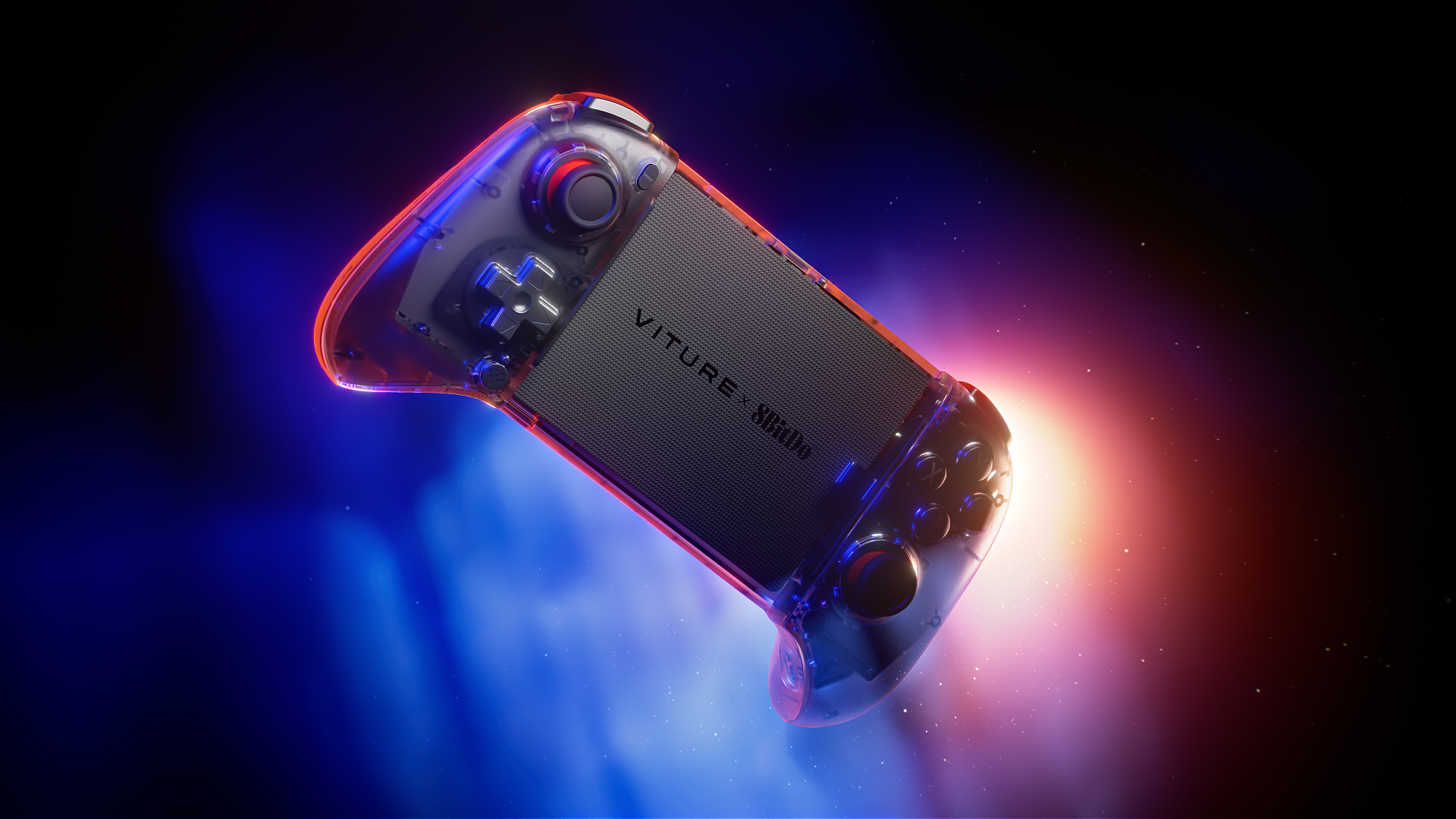Laptop Mag Verdict
The Pixel 6 takes the lessons learned from the more affordable Pixels and adds just enough high-end features to appeal to flagship fans who don’t want to spend $1,000.
Pros
- +
Excellent software support
- +
Unique AI software features
- +
Bright 90Hz display
- +
Affordable price
- +
30W fast charging
Cons
- -
Unproven processor
- -
No telephoto lens
Why you can trust Laptop Mag
Price: $599
OS: Android 12
Display: 6.4-inch FHD+ (2400x1080) OLED at up to 90Hz
CPU: Google Tensor
RAM: 8GB
Rear cameras: 50MP wide-angle f/1.85; 12MP ultra-wide f/2.2
Front cameras: 8MP f/2.0
Storage: 128, 256, 512GB
Battery: 7:47
Size: 6.2 x 2.9 x 0.35 inches
Weight: 7.3 ounces
The Pixel 6 has finally arrived, and while leaks spoiled its features, one big surprise changes everything.
The phone has an amazing new 50MP primary sensor, it uses Google’s new custom Tensor chip and features a premium (though polarizing) design. But we knew all that already. So what changed? The price. At $599, the Pixel 6 is not a flagship phone and Google didn’t refer to it that way, instead, it positioned it as the continuation of Google’s “value proposition” lineup.
This puts the Pixel 6 in an interesting position in the market as the most affordable big-screen phone we’ve seen from a mainstream manufacturer. Adding to the value proposition is Google's promise to prove five years of security updates.
The Pixel 6 offers the most polished design and advanced hardware we have ever seen from Google, and at a price that is sure to draw attention. In this Pixel 6 review, I got over what it has been like to use the phone for about a week.
Pixel 6 price and configurations
The Pixel 6 starts at an aggressive $599 for the 128GB base model with 8GB of RAM and a 6.4-inch OLED display with a 90Hz refresh rate. You’ll pay another $100 to upgrade to 256GB of RAM, and if you are on Verizon or AT&T, the base price is $699 as those models include mmWave 5G while the standard unlocked model is limited to Sub-6GHz.
Even the pricier carrier models undercut nearly all mainstream competitors — only the iPhone 13 mini and Galaxy S20 FE retail at the same $699 price. If the Pixel 6 isn’t enough to convince people that Google is serious about its hardware efforts, the price should do it. This is a value at least equal to the Galaxy S20 FE, our favorite affordable flagship of 2020. The Pixel 5a remains an impressive offering if you want to stay below $500, but if you can afford the extra $150, the Pixel 6 is absolutely worth it.
In the U.S., the Pixel Pass subscription is a new alternative for those who want to go all-in on Google services and hardware. The subscription allows you to upgrade to a new Pixel every two years bundled with a subscription to YouTube Premium, YouTube Music Premium, Google Play Pass, and a 200GB Google One storage plan. It’s available through Google Fi or the Google Store and starts at $45 a month for 24 months for the Pixel 6 or $55 a month for the Pixel 6 Pro.
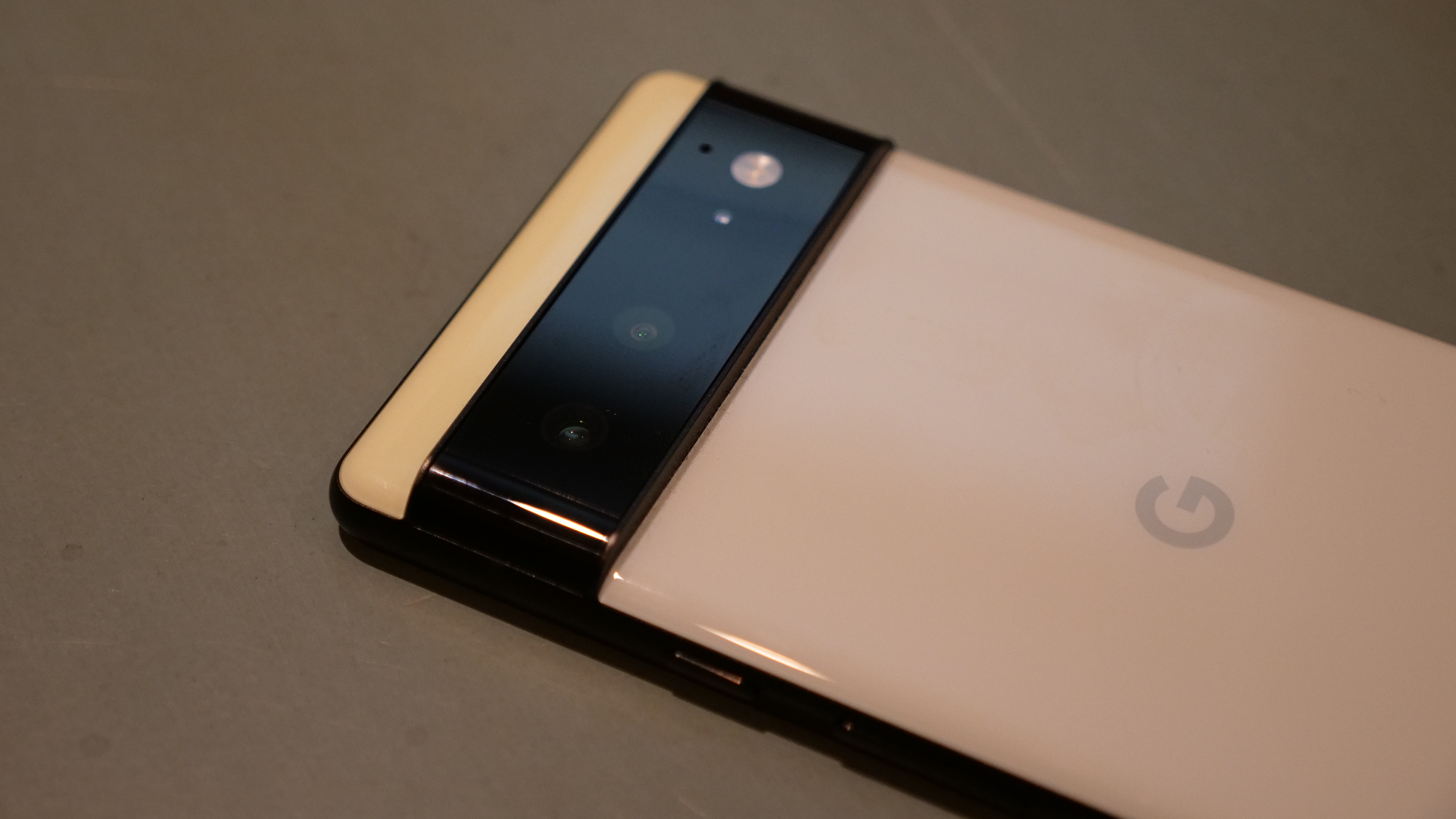
Pixel 6 design
There aren’t many tepid opinions about the Pixel 6 design — you either love it or hate it. But that's a good thing for Google. Pixel design has mostly elicited indifference in the past, or even negative reactions from those who thought the bezels were too large or took issue with the rear fingerprint sensor.
I suspect the biggest complaint levied at the Pixel 6 this year will be that it is too big. Our own Phillip Tracy is struggling with this as a Pixel fan. The 6.4-inch Pixel 6 is the largest Pixel that Google has ever made (excluding the new Pixel 6 Pro). At 6.2 x 2.9 x 0.35 inches and 7.3 ounces, it is irrefutably a huge phone. That dwarfs its competitors, including the iPhone 13 (5.78 x 2.82 x 0.3 inches, 5.7 ounces) and the Galaxy S21 (6 x 2.8 x 0.31 inches, 6 ounces).
I’m sympathetic to the complaint. After reviewing the iPhone 13 Pro, I was reminded of how nice it is to hold a 6.1-inch phone. I wish Google had come closer to that size with the Pixel 6, instead of offering you the choice of big or bigger. The massive size will eliminate the phone from consideration for some buyers. At the same time, the market has shown its preference for larger phones, so perhaps an affordable 6.4-inch option gives the Pixel 6 the broadest appeal.
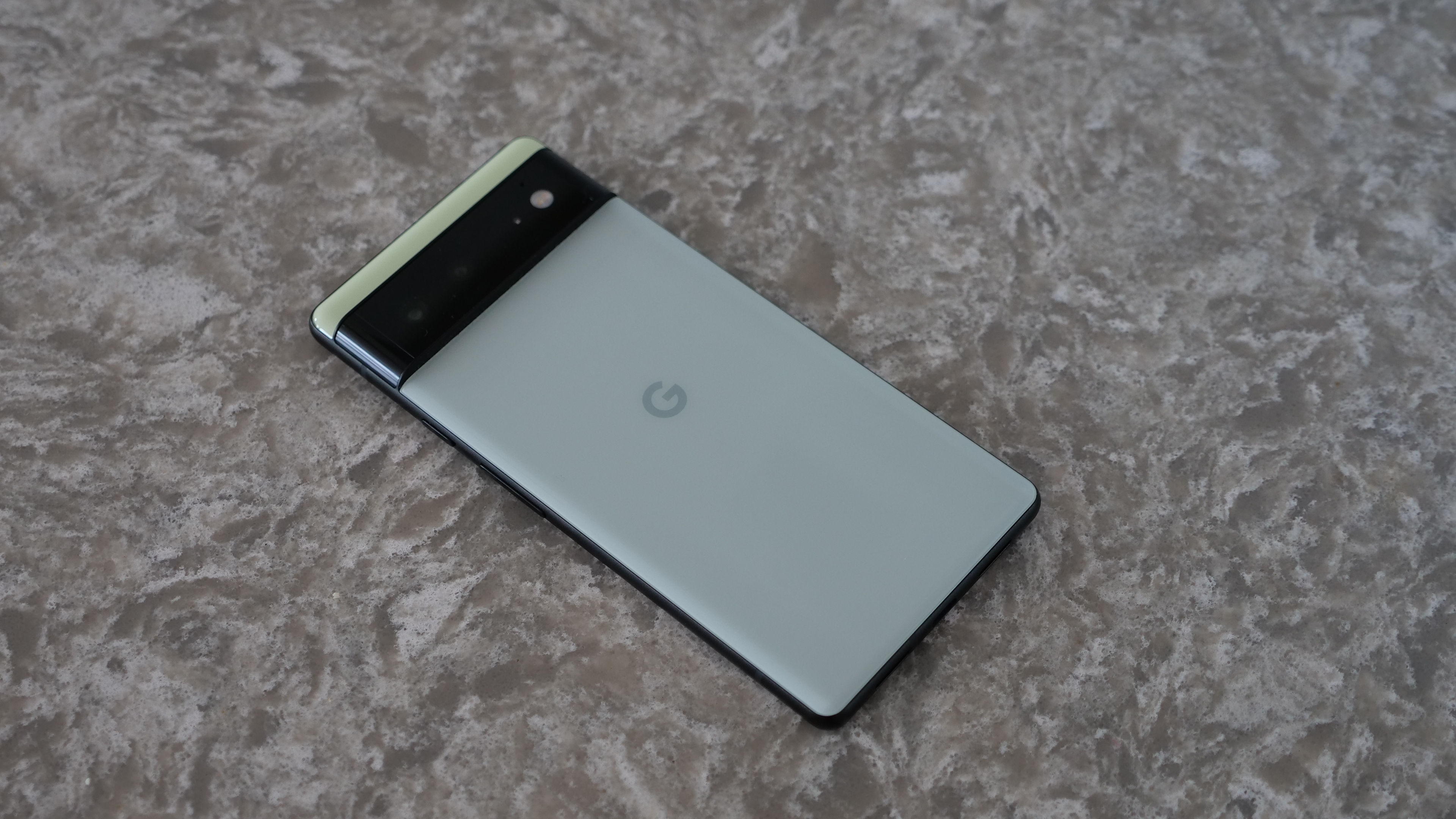
When it comes to the look of the phone, the rear camera array spanning the back panel is the dominant element, and the two-tone finish above and below the module makes the Pixel 6 instantly recognizable. It isn't for everyone, but I’m a fan of the look. It’s even a throwback in some ways to the two-tone finish on the Pixel 2 and the full-width rear camera on the Nexus 6P.
Some of the color options on the Pixel 6 make the look pop, like the Kinda Coral and Sorta Seafoam, but Stormy Black will be more your style if you want something traditional.
The Pixel 6 offers IP68 dust and water resistance certification, so it will survive being dunked for up to 30 minutes in around six feet of water. Corning Gorilla Glass Victus protects the display, while the Gorilla Glass 6 back should keep it safe from the occasional scratch or drop.
Looking around the outside of the Pixel 6, you won’t find much in the way of ports or buttons. Just a USB-C port at the bottom and the power and volume up and down located on the right side.
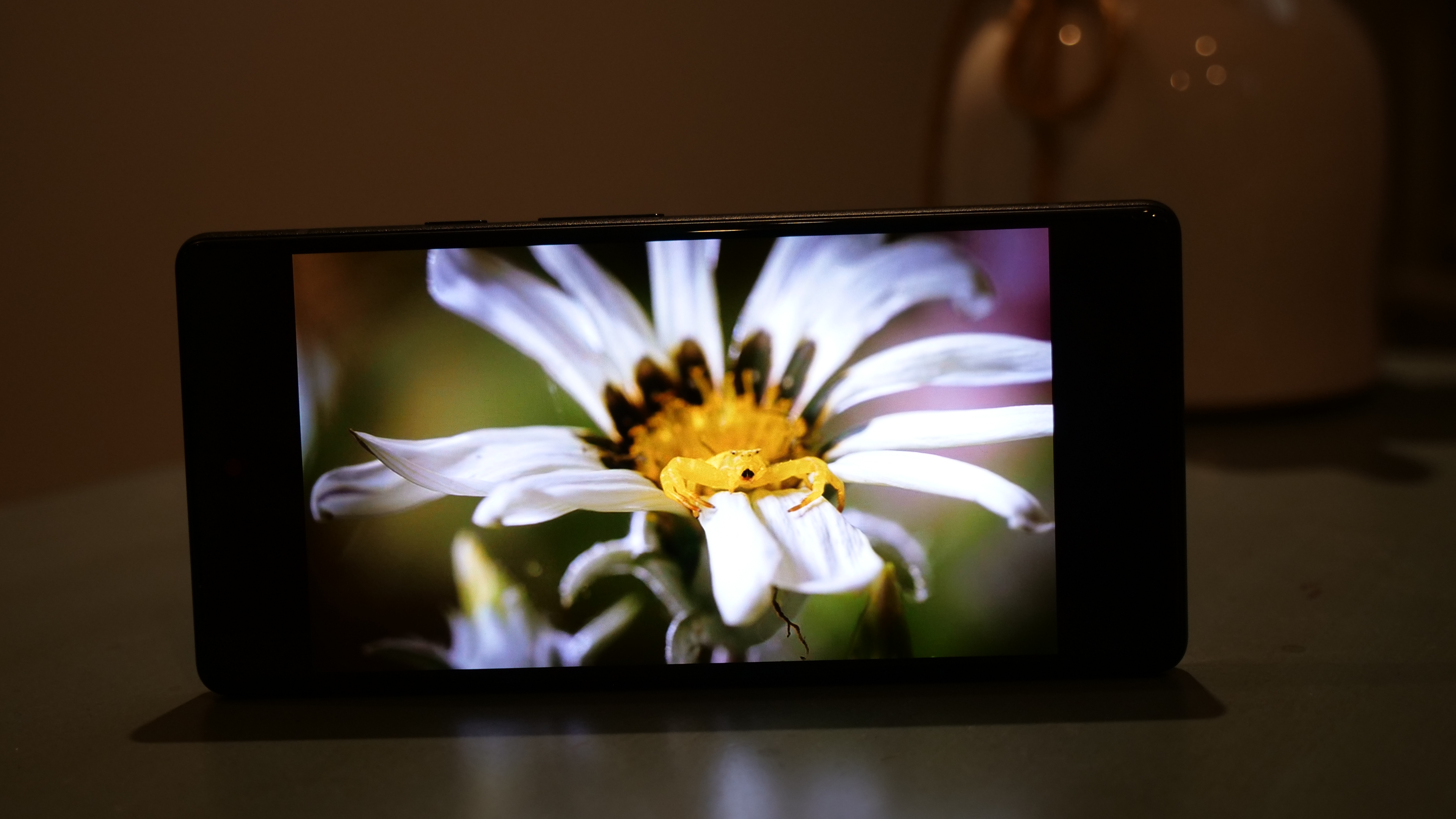
Pixel 6 display
The Pixel 6 features a 6.4-inch FHD+ (2400x1080 pixel) OLED with Google’s “Smooth Display” which offers up to a 90Hz refresh rate. It includes HDR support, a high brightness mode, over a million-to-one contrast ratio and full 24-bit depth for 16 million colors. While it is shown up by its larger sibling, this is easily the best display on a Pixel to date.
While we have now seen plenty of 120Hz displays on more affordable phones, the 90Hz of the Pixel 6 isn’t to be sneered at. It gives you enough of a refresh rate boost to discern smoother animations, especially for those coming from a 60Hz panel. The traditional flat display of the Pixel 6 gives you more noticeable bezels than the waterfall display of the Pixel 6 Pro, but it reduces the likelihood of accidentally swiping or tapping on something at the edge of the screen.
I pulled up Life in Color with David Attenborough and watched some of the “Hiding in Color” episodes. The detail, brightness, and colors were all fantastic. A yellow spider perched on a white flower petal shows off all of these elements at once. The bright and crisp white of the flower petals, down to the vein structure in them, is clearly visible, while the translucent yellow legs and body of the spider show a very precise color range as it tries to blend into the yellow center of the flower.
Our lab testing was a bit up and down for the Pixel 6 with the phone reproducing 71.5% of the DCI-P3 color gamut in its Natural color setting. The iPhone 13 (78%) and Galaxy S21 (76.4%) have an edge there, but as with other Android phones, you have the option to switch to a boosted color mode for a more saturated look.
The Delta-E color accuracy test results (lower is better) are middle-of-the-road with a 0.28. That is just behind the iPhone 13 (0.26) and slightly ahead of the Galaxy S21 (0.29).
The Pixel 6 hits it out of the park when it comes to brightness with an average peak of 843 nits. Despite the boost to the iPhone 13 (795 nits) it still came up short and the Galaxy S21 (702 nits) didn't come close.
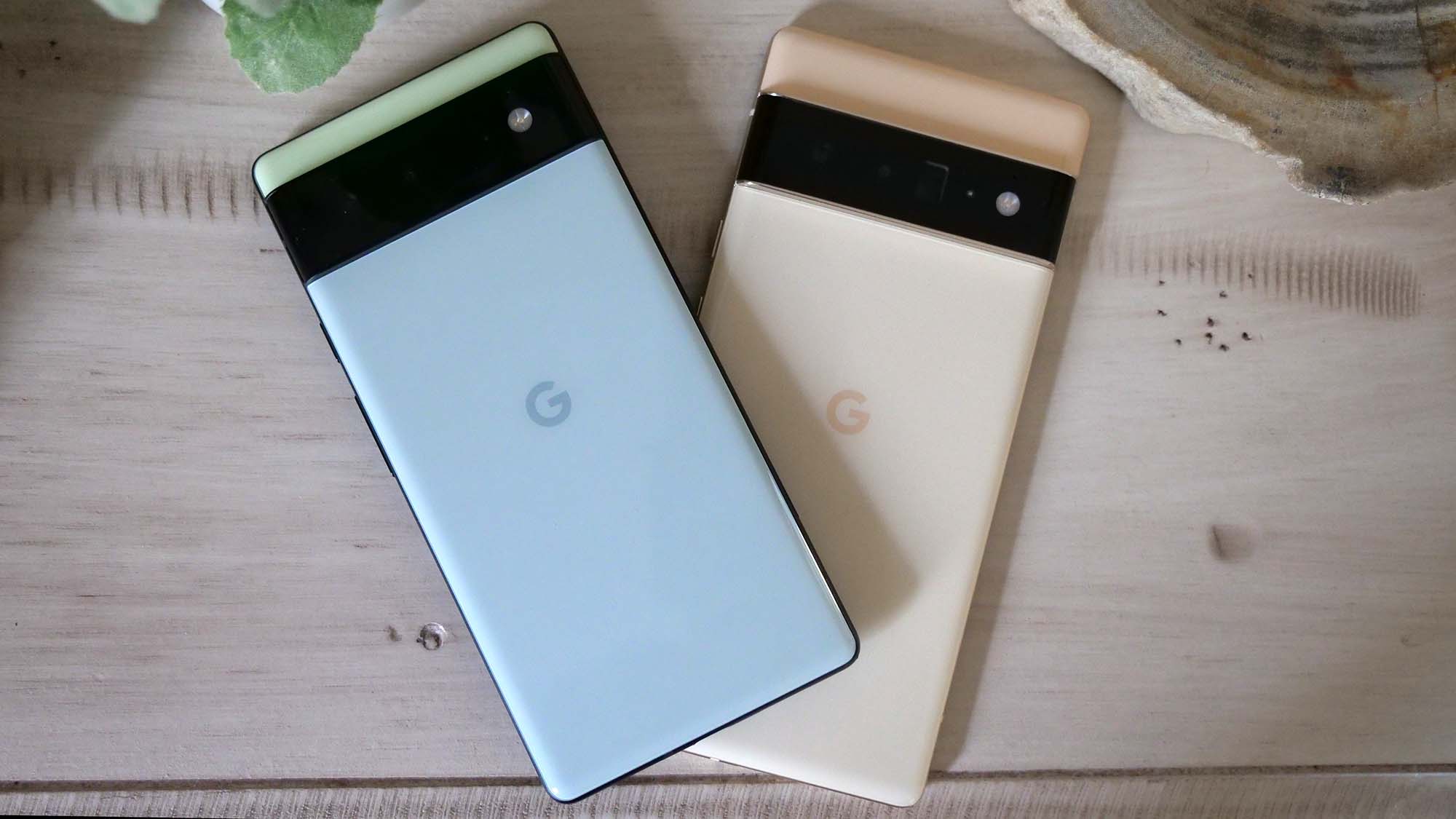
Pixel 6 performance and graphics
With the introduction of Google's custom Tensor chip, the Pixel 6's performance is one of the biggest questions on Pixel fans’ minds. When it comes to raw power, we know where it stands, but it is less clear how this will hold up in the long term.
Google said the Pixel 6 and Pixel 6 Pro are the fastest Pixels ever and that is unquestionably true. Last year’s Pixel 5 dropped to a mid-tier Snapdragon 765G processor and the previous flagship-class Pixels featured the Snapdragon 855 processor from 2018. Defeating that competition isn’t going to put fear into the hearts of Apple or Samsung.
However, Google spent years developing Tensor with a focus on delivering superior performance through advanced on-device AI for faster and better speech recognition and improved image processing. Some of this will require more extensive testing, but in roughly a week with the phone, the investment appears to have paid off.
My typical review gauntlet for phones includes loading a couple of dozen Google Chrome tabs, running a Netflix video in the background, and then swapping between several other apps including Twitter, YouTube Music, and Gmail. None of this proved a problem for the Pixel 6. I was able to quickly switch between tabs and apps without any stuttering in the operating system or video.
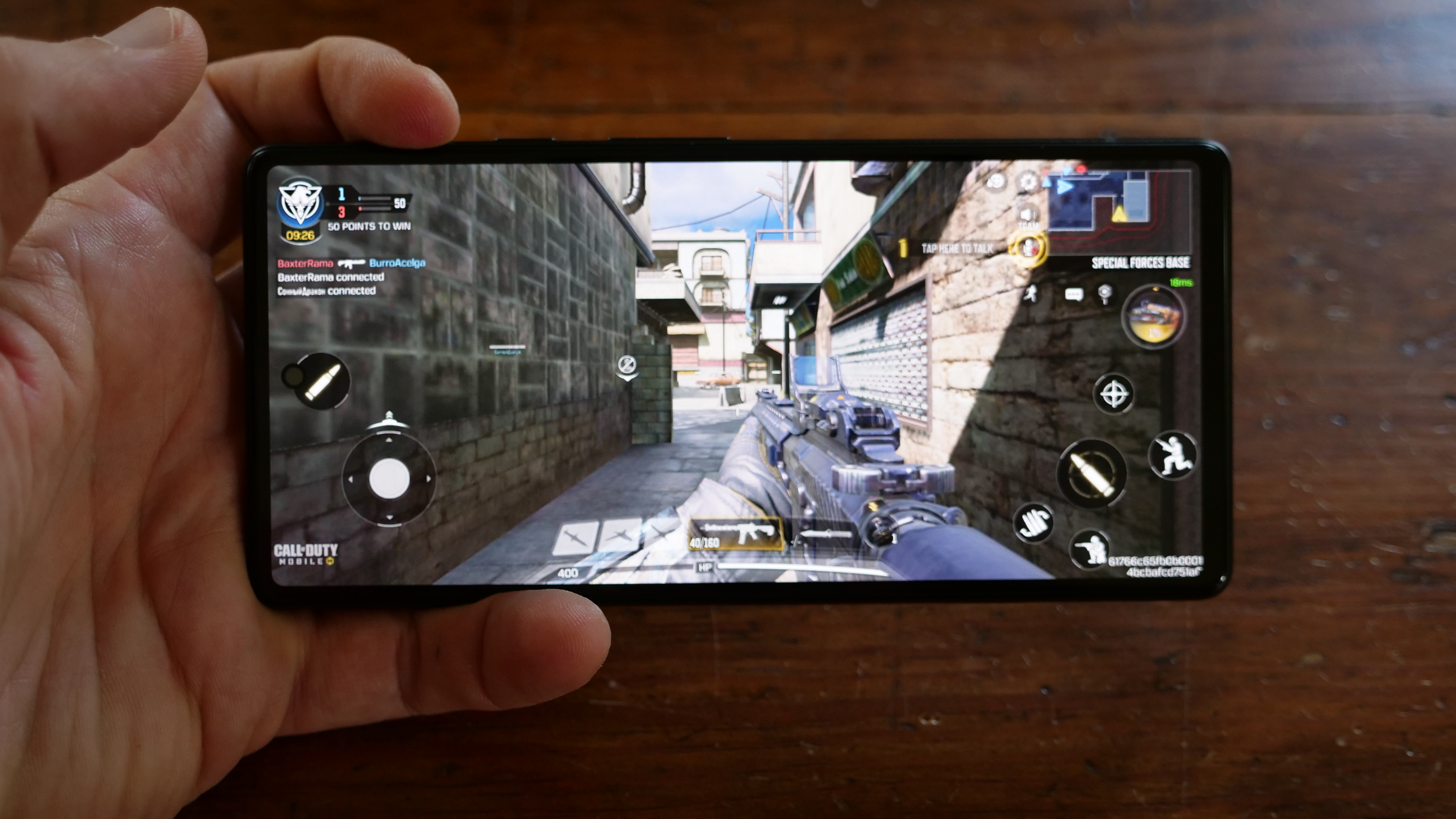
I installed Call of Duty Mobile to see how Tensor would hold up to some reasonably intense gaming and was pleasantly surprised. Even with the graphics topped out at their “very high” setting, the game ran smoothly and the 6.4-inch display with a 90Hz refresh rate makes it one of the best affordable phones for gaming. While it may have a hard time in a couple of years keeping up with the latest games at their top settings, for now, the Pixel 6 is more than up to the task.
Looking at our performance benchmark tests, Geekbench 5 wasn’t overly kind to the Pixel 6 with a multi-core score of 2,696. That is so far behind the iPhone 13 (4,436) that it’s hard to imagine we used the same test. Even the Galaxy S21 (3,302), despite finishing \behind the iPhone 13, was well ahead of the Pixel 6.
Where things get more interesting for the PIxel 6 is graphics and real-world benchmarking. In the Wild Life Unlimited graphics test, the Pixel 6 managed 34 fps, matching the Galaxy S21. The iPhone 13 easily beat them both at 56 fps.
In our Adobe Premiere Rush test that has the phone convert a 4K video to 1080p, the Pixel 6 delivered one of the best results we’ve seen from a non-iPhone. It converted the video in just 48 seconds, which is 14 seconds faster than the Galaxy S21, and while the iPhone 13 (26 seconds) takes another easy victory, it’s a strong showing for the most affordable phone in the group.
There are two key advantages to Tensor that aren’t really being captured in our tests. The first is Google’s ability to tune this chip to its own priorities, which should yield faster real-world performance than benchmarks may show. The second I’ll address further in software, but it is the length of support that Google can offer for a chip that it knows and controls inside and out.
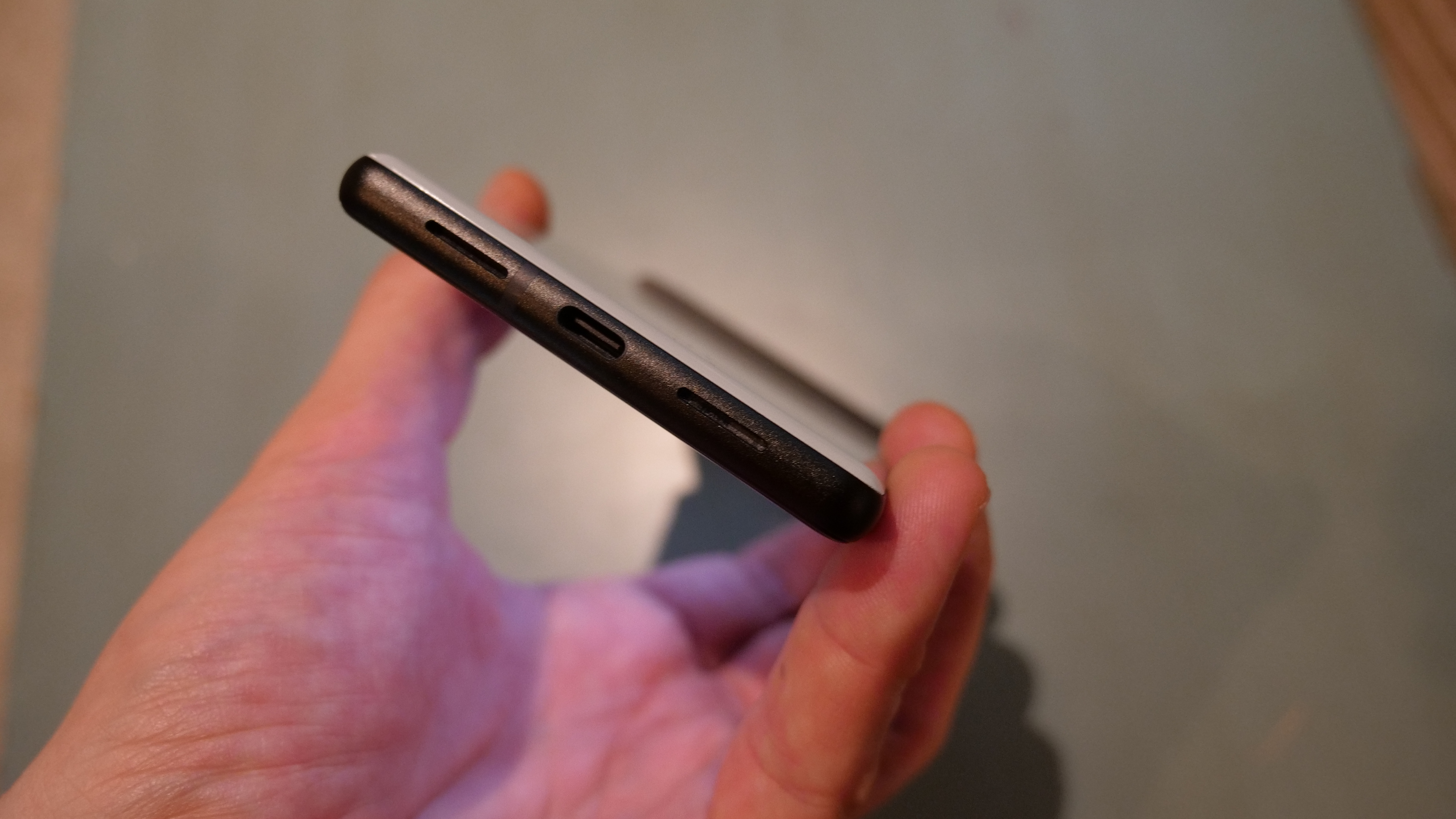
Pixel 6 battery life and charging
After perennially coming up short on battery life, Google seemed to finally learn its lesson with the last round of Pixels, and the Pixel 6 appears to continue that trend with a 4614mAh battery. Google boasts that the phone should deliver “Beyond 24-hour battery life” and up to 48-hours of battery life if you use Extreme Battery Saver.
I’ve had no difficulties making it through a typical full review day with the phone. This usually means running from around 7:30 a.m. to 10:30 p.m. with two hours of Netflix and/or YouTube streaming on Wi-Fi, web browsing, using social media, gaming for about 30 minutes, and capturing photos and videos. I dipped to 20% battery remaining on a more strenuous day with the phone, but I haven’t killed it completely.
Our Laptop Mag Battery test was considerably less positive for the Pixel 6. Set to its 60Hz refresh rate, the phone managed 7 hours and 47 minutes of continuous web browsing with the screen at 150 nits of brightness. This is a horrible result compared to either the iPhone 13 (10:33) or Galaxy S21 (9:54).
I’ll need to spend more time with the phone to get a better feel for where it falls between those two extremes. Given my experience thus far, I feel that Google’s adaptive battery software may be particularly poor at our web surfing test, but it’s possible my real-world results have been fool’s gold and will get worse as time goes on.
Charging finally gets a nice bump up to 30W fast charging. Excitement over fast-charging may be tempered by the lack of the necessary 30W USB-C charger in the box. Once you pick up Google’s 30W USB-C charger with USB-PD 3.0 support (or any compatible charger), the phone will charge to 50% in about 30 minutes. It’s no OnePlus Warp Charge 65W, but it surpasses the charging wattage for Apple or Samsung.
Support for Qi wireless charging, fast wireless charging, and battery share are all available and the latter is quite handy if you have a pair of wireless headphones or a Qi-compatible smartwatch that can be topped up on the go.

Pixel 6 cameras
While it doesn’t boast the telephoto of its flagship sibling, the Pixel 6 cameras still represent a massive leap forward with a 50MP Octa PD Quad Bayer lens with an f/1.85 aperture and 1.2µm pixel width. The new sensor is 1/1.31”, one of the largest in any smartphone on the market. The 12MP ultra-wide is a more incremental upgrade, but the larger 1.25µm pixel width, f/2.2 aperture, and wider 114-degree field-of-view yield better results than the predecessor.
These cameras are identical to the Pixel 6 Pro, meaning you are losing nothing by choosing the $300 cheaper Pixel 6 when it comes to photography other than the 4x optical zoom and 20x digital zoom. Even as someone who regularly advocates for telephoto lenses on phones, I concede that the Pixel 6 is a hard value to pass on.
Google’s computational photography has lost nothing in its transition to these new sensors, and the combination puts Google back in the conversation for the best phone cameras on the market. What we can say for sure is that it easily wins that title in the sub-$600 price range.
Wide-angle camera
The new wide-angle camera is an absolute game-changer for the Pixel 6 in every regard. For the last few years, the Pixel cameras have been beautifully tuned sports cars trying to race with a 10-year-old engine; there’s only so much that can be done. Now, the low-light performance that was being done solely with computational photography is boosted by a sensor that also excels at low-light.
The detail captured with the 50MP is fantastic as well; the photo of a beholder statue at my gaming convention this week can be scrutinized for every last inch of the bizarre creature. While it doesn’t completely make up for the lack of a telephoto, it does a good enough job that extracting a 4-5x zoom is possible.



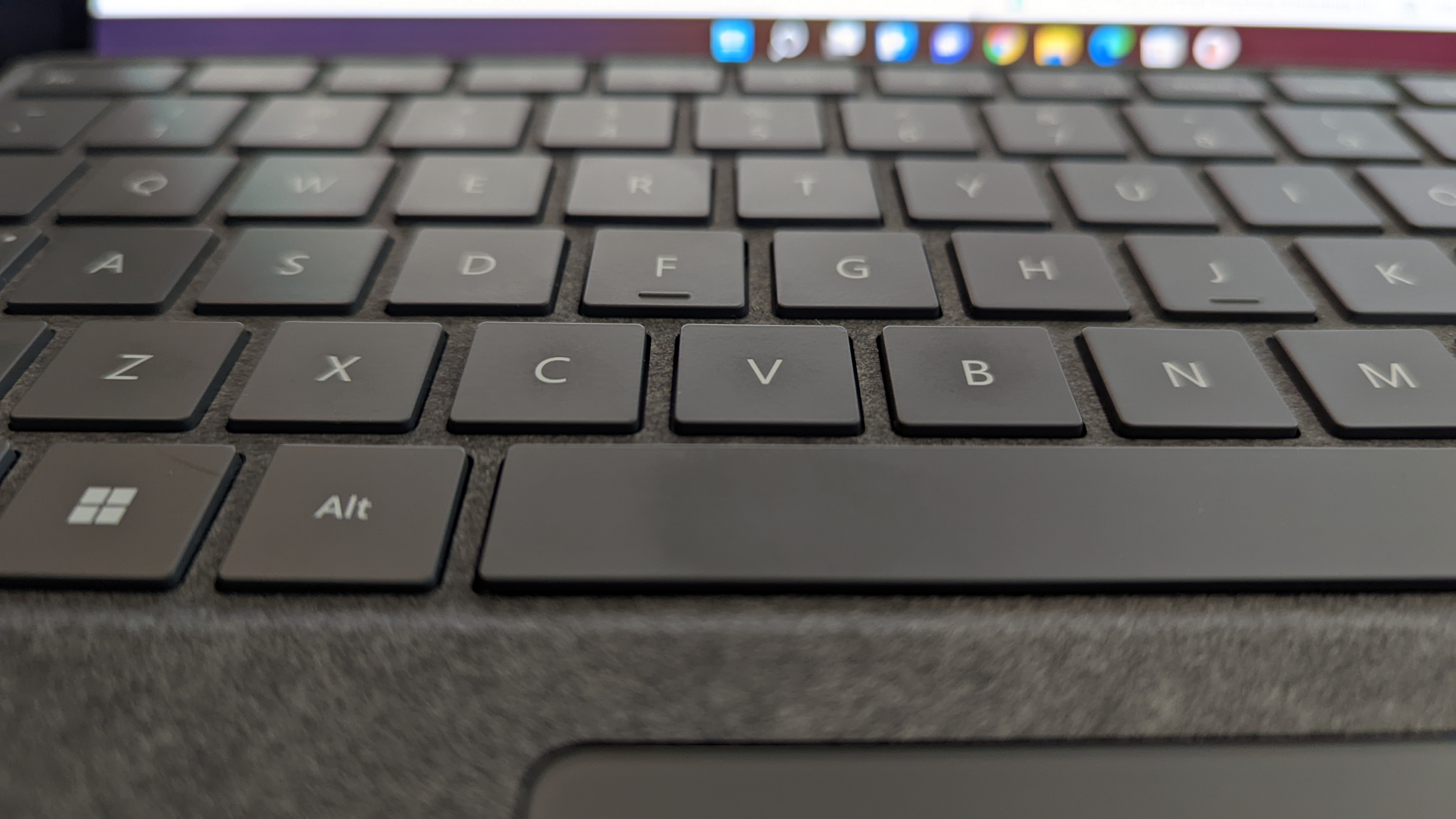
Ultrawide camera
While the ultra-wide isn’t as transformative, it still represents a step forward from before. The loss in resolution is less of a concern given that, with ultra-wide, you are likely shooting landscapes, cityscapes or group photos. These aren't situations where you need to punch in on a photo.
I was glad to see a lack of distortion that can be prevalent in ultra-wide shots as you can see in the shot of the mural on a nearby restaurant. The ace up Google’s sleeve for its ultra-wide is actually a new software feature, Magic Eraser. It can automatically eliminate unwanted elements from your photos. It makes photobombers a problem of the past and the results are absolutely remarkable.
I frequently use Photoshop for this feature, but Magic Eraser achieves similar results in seconds by just highlighting whatever you want to be removed from the photo. The feature works with any of the lenses, but it's more common to catch stray elements on the ultra-wide lens that you can then quickly remove. It isn’t limited to photos from the Pixel 6 either; scroll back through your Google Photos timeline and you may be able to salvage some great shots from the past.



Front-facing camera
The front-facing camera on the Pixel 6 is the only one that differs from the Pixel 6 Pro, but despite a lower megapixel count, it actually has a better aperture at f/2.0. The 84 degree field of view is more limiting than the 94 degrees of the Pixel 6 Pro, but it shouldn't be a problem unless you take a lot of group selfies.
The results from the front-facing camera are outstanding when using portrait mode. Google’s ability to parse the background despite its lack of depth sensors (like what you see on the iPhone) is remarkable. It seemed to not miss a single detail, even my unruly hair, while applying a beautiful bokeh to the background.

Video
Video quality on the Pixel continues to lag behind Apple, and the gap has only widened with the new advanced video features found on the iPhone 13. . There’s nothing wrong with the basic video capture from the Pixel 6, though. It’s capable of 4K or 1080p at 30 or 60 frames per second, while the front-facing camera is limited to 1080p at 30fps.
The video itself looks good, benefitting from the improvements to the camera sensors. However, those are all pretty much table stakes for a modern smartphone. Some of the new image stabilization options like Cinematic Pan and more unique options like the astrophotography timelapse are interesting, but Google fails to make them as accessible as Apple. For capturing family videos, the Pixel 6 is absolutely up to the task, but for most creators, this remains a weak point.
Pixel 6 software
The Pixel 6 runs Google’s slightly modified version of Android 12. Our review of the updated OS will give you a detailed look at the updated user experience and user interface, but the Pixel 6 gives you even more. It’s something Google is finally playing up more with its Pixel marketing in referencing the regular “feature drops.”
While some of these features are legitimately quite useful, the upgraded software support should get the most attention. Google will now offer five years of security updates for the Pixel, nearly matching the six years that Apple typically provides. However, major OS updates are limited to three years, well shy of what Apple offers.
The Pixel 6 can take some of the pain out of calling businesses with its Wait Times, Direct my Call and Hold for Me features. These show you optimal times to call a particular business, transcribe automated menu options for you, and notify you when someone picks up your call after putting you on hold. I’ve used Google’s call screening on my Pixels since it first became available and have come to really miss these touches when I’m using other devices.
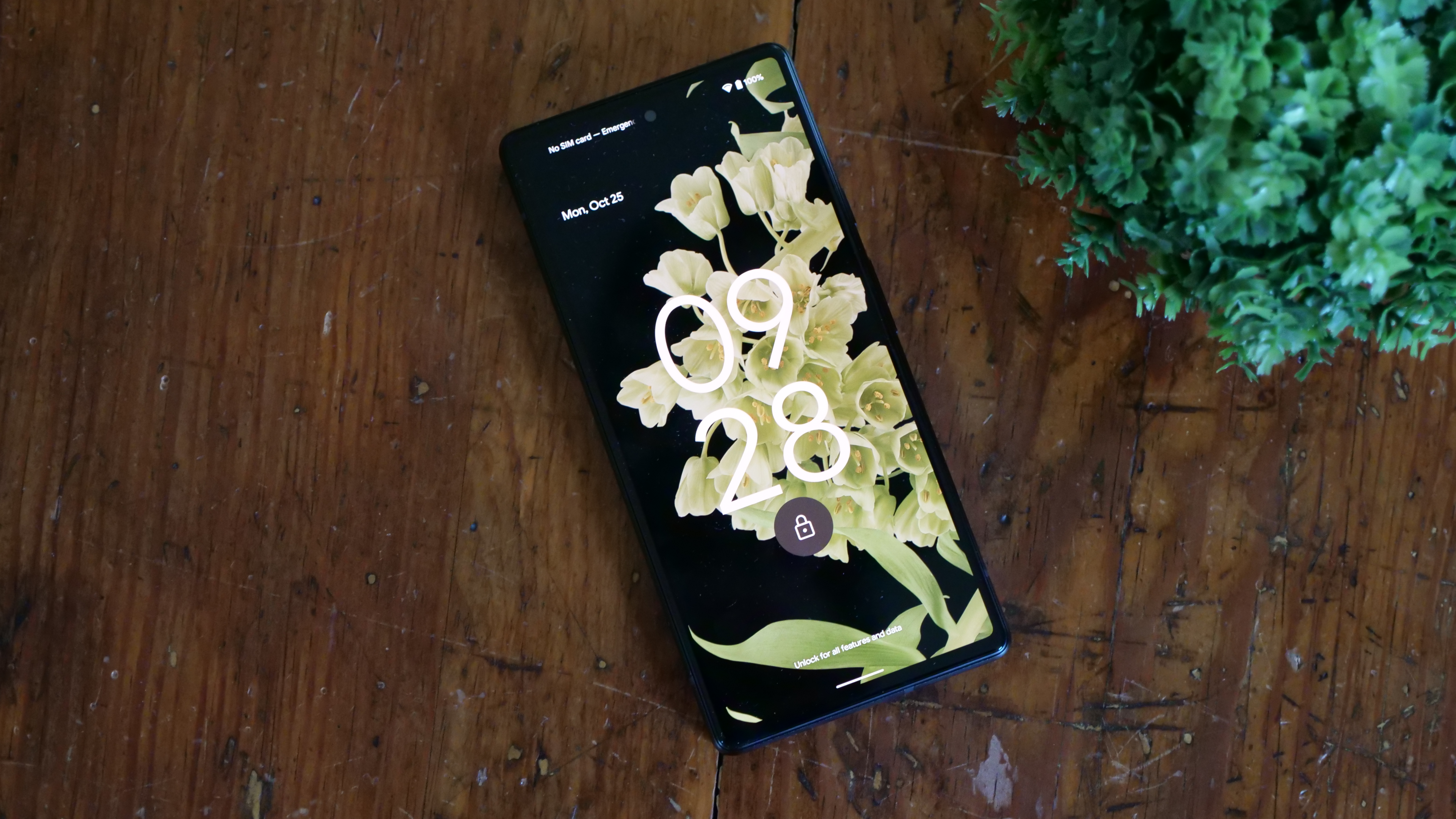
If you like going hands-free with your phone, the improved Assistant voice typing should be a boon. Now you can just say, “Hey Google, type” when you are in a messaging app, and it will let you dictate and send messages, including precise cursor movement, spelling out unusual words or names, and emoji.
Live Translate is more impressive than ever with the ability to translate messages (11 languages) or media (5 languages) on your phone in real-time. The camera mode using Google Lens will translate anything it sees into 55 languages offline and 104 languages when online. Using Interpreter Mode, Assistant will translate back and forth for you in up to 48 languages online.
Google’s robust at a glance feature is also more powerful than ever and will try to show you contextually relevant information on your home screen and lock screen. This includes weather, local alerts, travel details that it pulls from your email, appointments, and traffic to relevant destinations. It's all about Pixel being smart enough to show you what you need to know without you having to ask for it.
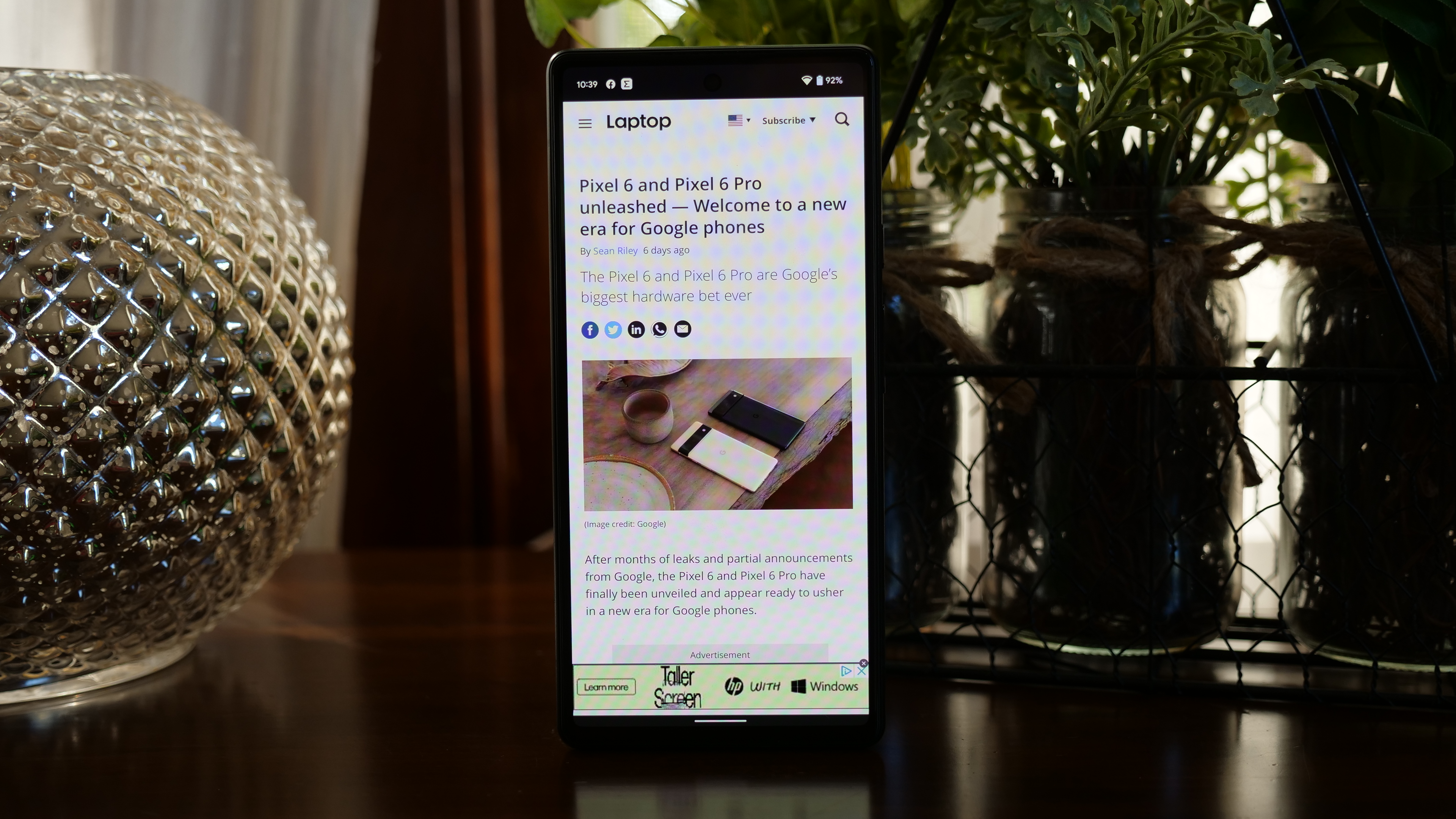
Bottom line
While the Pixel 6 Pro is the true flagship Google phone, the Pixel 6 is clearly the phone meant to lead Google’s phone armada.
The Pixel 6, at $599, creates a clear upgrade path for Pixel fans coming from the Pixel 3a or Pixel 4a, who were underwhelmed by the Pixel 5a and wanted more without spending $1,000. The budget realm has been Google’s bread and butter over the last few years and the Pixel 6 may perfectly fit into an underdeveloped price range in the market.
While it may lack premium features found on the Pixel 6 Pro and some and other flagship phones from Samsung or Apple, the large 90Hz display, incredible primary camera and strong software support from Google may be enough to finally push a Pixel device into the mainstream.
Sean Riley has been covering tech professionally for over a decade now. Most of that time was as a freelancer covering varied topics including phones, wearables, tablets, smart home devices, laptops, AR, VR, mobile payments, fintech, and more. Sean is the resident mobile expert at Laptop Mag, specializing in phones and wearables, you'll find plenty of news, reviews, how-to, and opinion pieces on these subjects from him here. But Laptop Mag has also proven a perfect fit for that broad range of interests with reviews and news on the latest laptops, VR games, and computer accessories along with coverage on everything from NFTs to cybersecurity and more.
